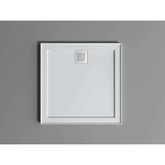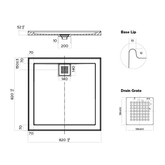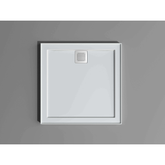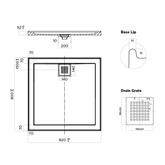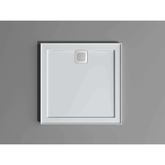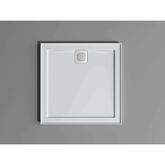What is the difference between a sink and a basin?
If you’ve ever found yourself wondering, “Wait—what exactly makes something a sink versus a basin?” you’re not alone. These two terms are often used interchangeably, but subtle differences can guide you toward the perfect fixture for your space. Below, we’ll break it down, add a few laughs, and point you in the right direction—whether you need a sleek bathroom basin or a heavy-duty kitchen sink.
Quick Comparison
-
Basin: Typically refers to a bathroom fixture used mainly for hand-washing or face-washing. Often shallower, more decorative, and comes in a variety of styles (wall-hung, countertop, pedestal).
-
Sink: Generally deeper and wider, built for kitchen or laundry workloads (washing dishes, food prep, cleaning larger items). Usually paired with drainer boards, accessories, and more rugged materials.
-
Terminology Note: In Australia and the UK, “basin” often denotes a bathroom fixture, while “sink” is more common for kitchens/laundries. In the US, “sink” can also be used for bathroom fixtures, which leads to extra confusion.
What Is a Sink?
A sink is built for grunt work—primarily kitchen and laundry duties. It’s deeper, tougher, and ready for heavy lifting (washing dishes, filling pots, laundry tasks). Key characteristics:
-
Deeper Bowl: Designed to hold more water and accommodate large pots, pans, and even pet baths (if you’re feeling generous to Fido).
-
Materials & Durability: Often made from stainless steel, granite composite, fireclay, or other sturdy materials that resist stains, scratches, and high temperatures.
-
Functional Add-Ons: Many sinks have built-in drainer grooves, cutting boards, colanders, or accessory kits. These extras let you chop veggies, rinse produce, and drain pasta right over the sink—no extra bench space needed.
Common Sink Types:
-
-
Single Bowl Sink: A single, large basin—perfect for consolidating dishes, pots, and pans.
-
Double Bowl Sink: Two bowls side by side—soap vs. rinse, or “touch base” for dishes and chopping.
-
Undermount vs. Top-Mount: Undermount sinks mount below the countertop for a seamless look (no crumbs collecting on a lip). Top-mount sinks drop in from above, often easier to install if you’re retrofitting.
-
What Is a Basin?
A basin is your go-to for bathrooms. Think: “I need something elegant, compact, and purely for washing up.” Basins tend to be:
-
Shallower and Smaller: Designed for hand-washing, brushing teeth, or light grooming.
-
Stylish: Available in wall-hung, pedestal, semi-recessed, countertop, and vessel styles. Perfect for making a decorative statement or complementing a minimalist look.
-
Bathroom-Specific Features: Many basins have integrated overflow holes (so you don’t flood the bathroom if you walk away mid-shave) and pair with bathroom-style taps (mixer taps, monoblock taps, wall-mount taps).
Examples of Basin Styles:
-
-
Wall-Hung Basin: Mounts directly to the wall—great if you want a floating look, extra floor space, or need easy cleaning underneath.
-
Vessel Basin: Sits on top of the vanity bench for a sculptural vibe. (You might feel like Leonardo da Vinci crafting a bathroom if you pick one of these.)
-
Pedestal Basin: Hides plumbing behind a sleek column—simple, classic, and budget-friendly.
-
Key Differences Between Sinks and Basins
-
Scope of Definition:
- Sink: Encompasses the entire fixture, including the basin, faucet, and drain. It can be installed in various places around the home, such as kitchens, bathrooms, and utility rooms.
- Basin: Refers specifically to the bowl or container that holds water. It is part of a sink setup but does not include additional components like faucets or cabinetry.
-
Common Uses:
- Sink: Used in multiple settings including kitchens, bathrooms, and laundry rooms. Sinks come in various styles and configurations, such as undermount sinks, top-mount sinks, and integrated sinks with countertops.
- Basin: Typically found in bathrooms (e.g., washbasins) but can also be used in other contexts like outdoor areas or garden features. Basins are designed for holding water and are often installed as part of a larger fixture.
-
Design and Functionality:
- Sink: Designed to provide a complete solution for tasks such as washing dishes, cleaning hands, or rinsing items. Sinks often include built-in accessories such as soap dispensers or sprayers.
- Basin: Primarily focused on holding water and facilitating washing or rinsing. The design is more about the bowl shape and size, rather than the complete setup.
-
Installation and Integration:
- Sink: Involves installation of the entire fixture, including the basin, faucet, and any associated hardware. Sinks are typically integrated into countertops or cabinetry.
- Basin: Installed as part of a sink setup or as a standalone feature. For example, a countertop basin is mounted on top of a counter, whereas an undermount basin is installed beneath the counter.
-
Terminology Usage:
- Sink: More commonly used in everyday language to describe the entire fixture used for various washing tasks. For example, a kitchen sink or bathroom sink.
- Basin: More precise term often used in contexts where the focus is specifically on the bowl or container aspect. For instance, a washbasin or a basin used for decorative purposes.
Why the Confusion?
Regional Language Differences
-
In Australia and the UK, bathroom fixtures are almost always called “basins.” Kitchen and laundry fixtures are called “sinks.”
-
In the US, “sink” can apply to both kitchen and bathroom—so “bathroom sink” is the norm.
-
When manufacturers list products, you might see “bathroom sinks” and “basins” in the same category online, which muddies the waters.
Retail & Industry Overlaps
-
Some retailers use “basin” because it sounds more upscale (it conjures images of monolithic stone bowls). Others prefer “sink” for clearer, everyday language.
-
In catalogs, you might see a “vanity basin” with a separate “kitchen sink” section—just keep an eye on descriptions and dimensions.
Choosing the Right Fixture: Sink vs. Basin
-
Purpose & Location
-
Bathroom: Unless you’re doing serious clean-up (like rinsing paintbrushes), a basin is your best bet. It’s often shallower, more stylish, and built for hand-washing tasks.
-
Kitchen/Laundry: If it’s for dishes, food prep, or laundry tubs, then a sink—with its deeper bowl and robust accessories—is non-negotiable.
-
-
Style & Aesthetic
-
If you want a statement piece in your powder room (think a dramatic vessel basin or waterfall edge), go with a basin.
-
For a more utilitarian look in the kitchen, a stainless-steel sink or composite granite sink ties in with worktops and appliances.
-
-
Installation & Plumbing
-
Basins often come with semi-recessed or fully exposed plumbing (especially pedestal or wall-hung styles). Plan for trap space and ensure your vanity cabinet can hide the P-trap if needed.
-
Sinks require cutouts in kitchen benches and often need a larger cabinet underneath for plumbing and storage.
-
-
Budget & Maintenance
-
Basins can range from budget-friendly acrylics to premium porcelain or stone. Keep an eye on finishes—matte finishes can show water spots faster than gloss.
-
Sinks carry budget variations: stainless steel (affordable, easy to maintain), fireclay (more expensive but highly durable), granite composite (mid-range, scratch-resistant). Consider how much everyday wear and tear you anticipate.
-
Installation Tips & Practical Notes
-
Height Considerations: Bathroom basins are typically mounted around 800–850 mm from floor level. Kitchen sinks sit lower—around 900 mm—so you have enough leverage for washing dishes without bending over too much.
-
Tap Compatibility: If you choose a tall vessel basin, pair it with a high-arc tap (wall-mounted or deck-mounted), otherwise you’ll end up kneeling on the floor to get water in your hands.
-
Overflow: Most bathroom basins include an overflow hole to prevent flooding. Kitchen sinks often omit overflow since they’re deeper (and you’re expected to keep an eye on dishwater).
-
Material Care:
-
Ceramic/Porcelain Basins: Use mild cleaners; abrasive powders can dull the finish.
-
Stainless Steel Sinks: Wipe down after use to prevent water spots; avoid steel wool that can scratch.
-
Composite Granite: Use non-abrasive cloths and mild detergents (acidic cleaners can degrade color over time).
-
Which One Do You Really Need?
-
Bathroom Remodel? You probably want a basin—browse clean-lined wall-hung styles or elegant countertop vessels.
-
Kitchen Reno? Grab a sink designed to handle dishes, food prep, and maybe even washing your toddler’s rubber duck.
-
Multi-use Spaces (e.g., Guest Bathroom with Mini-Kitchen)? Sometimes you’ll see a deeper basin with a larger bowl to double as a prep area. In those cases, look for “deep bowl basins” or “utility basins” designed specifically for flexible use.
Internal Links & Further Reading
-
Explore Our Bathroom Basins: https://bathroomhq.com.au/collections/basins
-
Browse Kitchen & Laundry Sinks: https://bathroomhq.com.au/collections/kitchen-sink
Final Thoughts
At the end of the day, whether you call it a “basin” or a “sink” often comes down to location, depth, and function. If it’s primarily for bathroom grooming, go basin. If it needs to tackle pots, dishes, or laundry, you need a sink. And if terminology still trips you up, remember this little mnemonic: “Basins = Bathroom; Sinks = Serious (kitchen & laundry) work.”
Now, go forth and pick your perfect fixture—your home (and plumber) will thank you.
